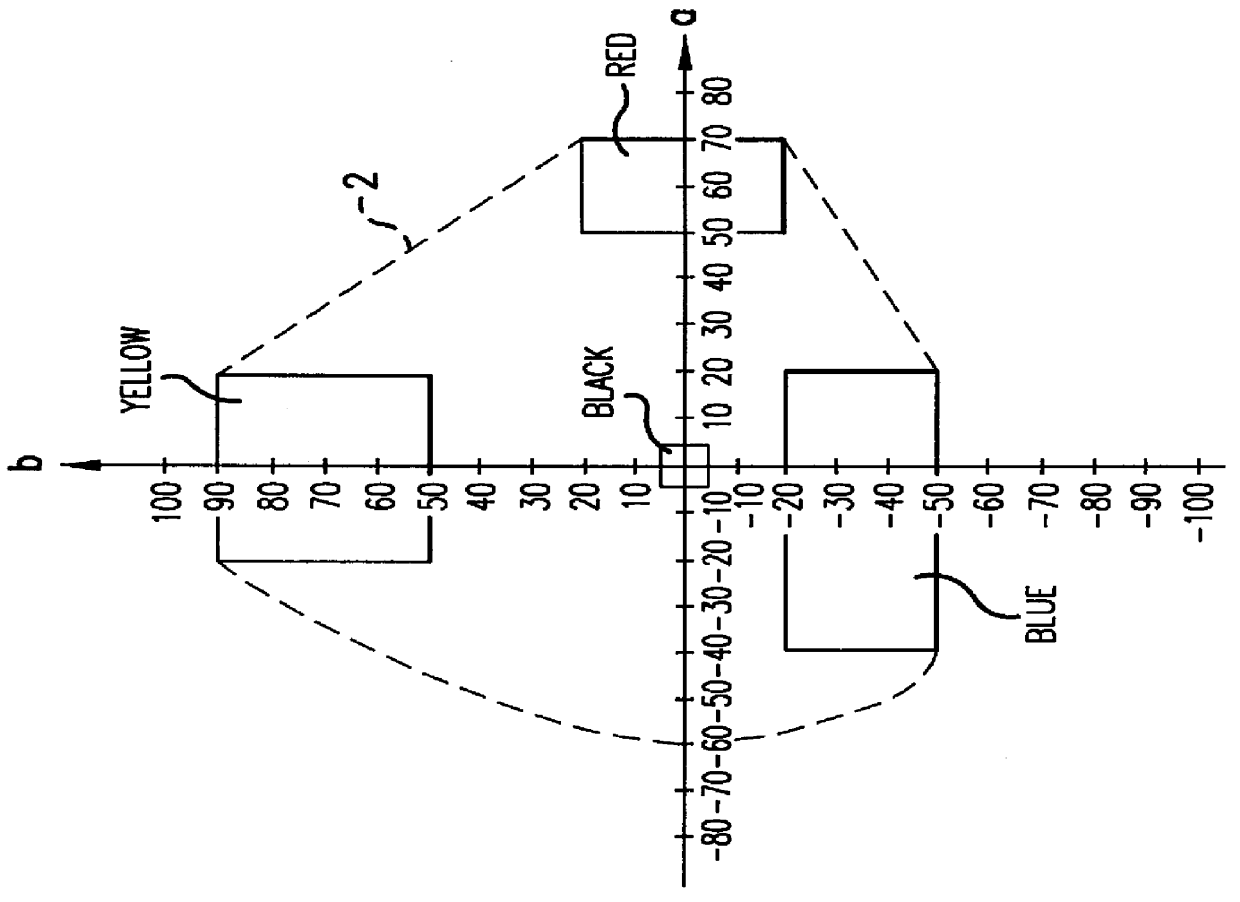Printed cloth and method of manufacturing the same
a technology applied in the field of printed cloth and manufacturing method, can solve the problems of not being able unable to achieve deeper color, and unable to achieve a fine line of 0.3 mm or less of printed pattern
- Summary
- Abstract
- Description
- Claims
- Application Information
AI Technical Summary
Problems solved by technology
Method used
Image
Examples
example 1
A cotton twill fabric, in which each of warp and weft was #50 single yarn, a warp density was 130 warps / inch and a weft density was 130 wefts / inch, was singed, desized, scoured and bleached by usual methods. The resultant cloth was padded by a treating solution consisting of the following composition and squeezed to a pick-up of 70% and then dried at 100.degree. C. for 2 minutes.
______________________________________ Yodosol PE-400 5 parts (polyolefin resin manufactured by Kanebo N.S.C. Co.) Sodium carbonate 2 parts Water 93 parts ______________________________________
Then, the four color dye liquids as shown by the following 1 to 4 were fed in an ink jet printer of bubble jet type and three patterns of A to C were printed on the pretreated fabric to 16 dots / mm and then dried at 120.degree. C. for 2 minutes.
______________________________________ Dye liquids ______________________________________ 1 Yellow CI Reactive Yellow 2 20 parts Urea 5 parts Water 75 parts 2 Red CI Reactive Red...
example 2
A silk plain fabric in which each of warp and weft was #140 two ply yarn, the warp density was 122 warps / inch and the weft density was 105 wefts / inch, was scoured by a usual method. The resultant cloth was treated in the same manner as in Example 1 to obtain a product having a clear printed pattern of deep colors in very natural appearance as in Example 1. It was also confirmed that the dyed condition on the fiber constituting the fabric was the same as in the product of Example 1.
example 3
Method A
A spun Fuji silk fabric in which each of warp and weft was #140 two ply yarn, the warp density was 122 warps / inch and the weft density was 105 wefts / inch, was singed, desized, scoured and bleached. The resultant fabric was padded by an aqueous solution containing 0.3 part of a fluorine water repellent agent, Sumi Fluoil EM21 (manufactured by Sumitomo Kagaku Kogyo Co.) and 1 part of ammonium sulfate (pH controller) and then immediately squeezed by a mangle to a pick-up of 70% and dried at 120.degree. C. for 3 minutes.
Then, 5 parts of each of the following six acid dyes was dissolved in 95 parts of water to prepare six dye liquids.
(1) CI Acid Violet 19
(2) CI Acid Orange 7
(3) CI Acid Red 131
(4) CI Acid Yellow 72
(5) CI Acid Blue 7
(6) CI Acid Black 110
With the use of these dye liquids, the above fabric was printed by an ink jet printer same as in Example 1 and dried at 120.degree. C. for 2 minutes and then steamed by saturated steam at 102.degree. C. for 30 minutes and washed.
Met...
PUM
| Property | Measurement | Unit |
|---|---|---|
| Length | aaaaa | aaaaa |
| Length | aaaaa | aaaaa |
| Volume | aaaaa | aaaaa |
Abstract
Description
Claims
Application Information
 Login to View More
Login to View More - Generate Ideas
- Intellectual Property
- Life Sciences
- Materials
- Tech Scout
- Unparalleled Data Quality
- Higher Quality Content
- 60% Fewer Hallucinations
Browse by: Latest US Patents, China's latest patents, Technical Efficacy Thesaurus, Application Domain, Technology Topic, Popular Technical Reports.
© 2025 PatSnap. All rights reserved.Legal|Privacy policy|Modern Slavery Act Transparency Statement|Sitemap|About US| Contact US: help@patsnap.com



